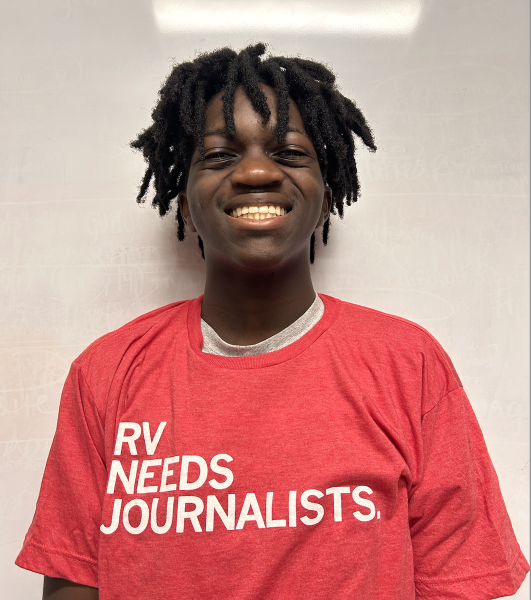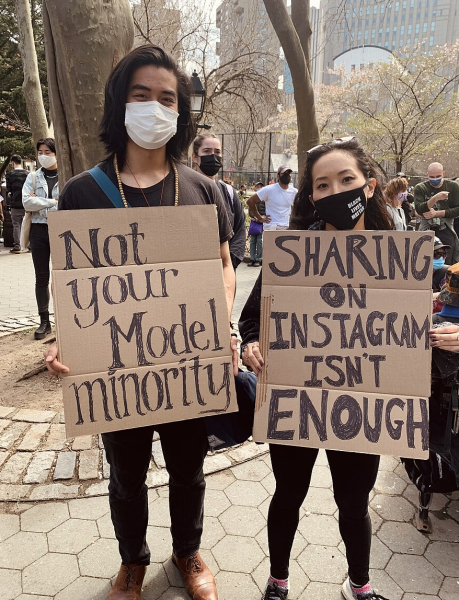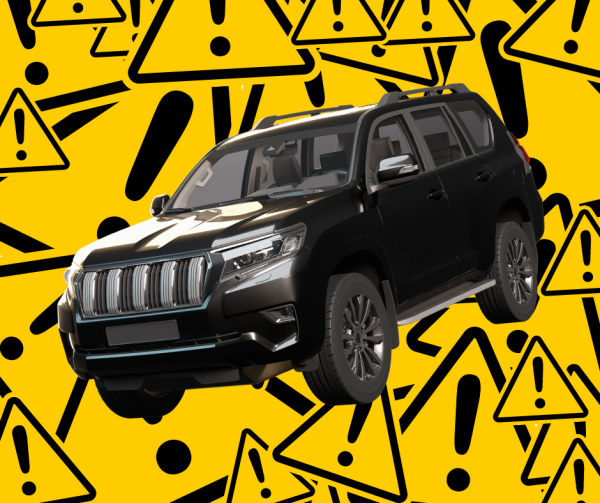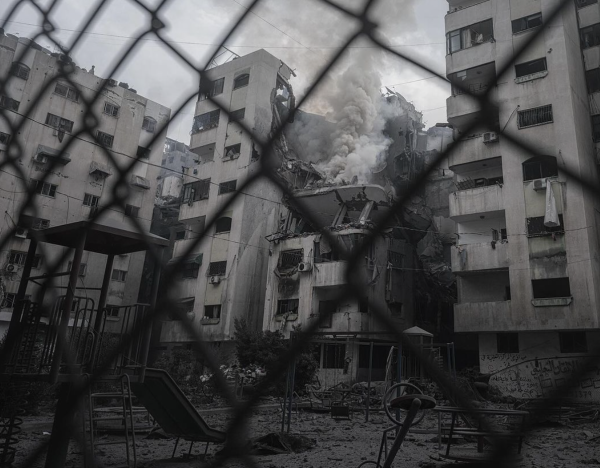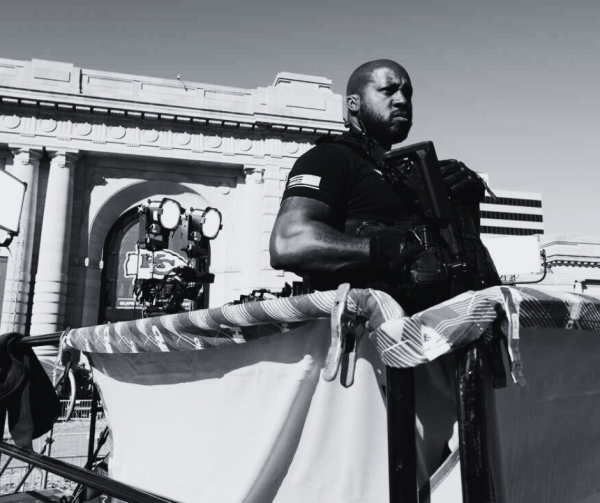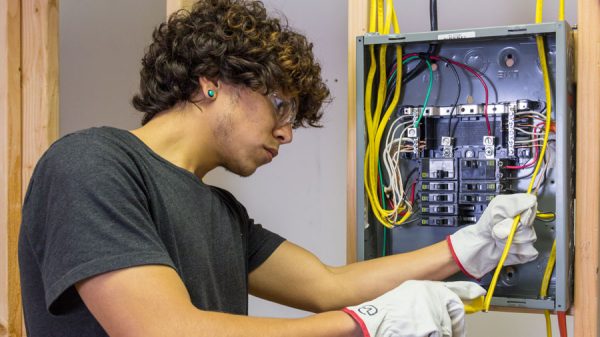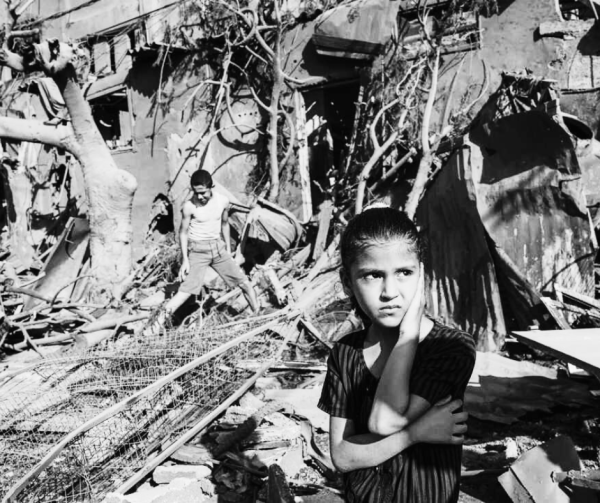The United States is the biggest threat to Latin America
A history of brutal American intervention has influenced some of Latin America’s most dangerous dictators
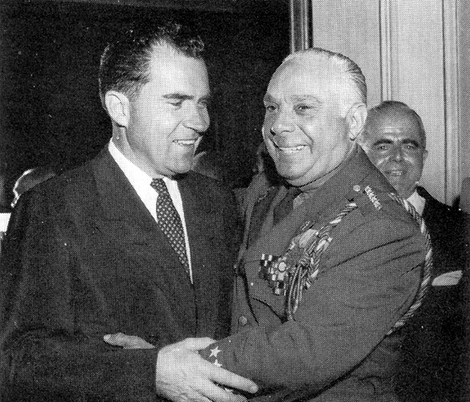
Photo courtesy of repeatingislands.com
Former president Richard Nixon shaking hands with Dominican dictator Rafael Trujillo
May 9, 2022
Unfortunately, Latin America has a chronic issue with military dictatorships.
From Augusto Pinochet to Fulgencio Batista to Hugo Chavez, Latin America has bred some of the worst dictators that the Americas have ever seen.
RV student Leandro Delgado, the child of Venezuelan immigrants, attributes the issue to the spread of Roman Catholicism by the Spanish and Portuguese during the age of exploration.
“Even though the efforts of Simon Bolivar were to create a republic similar to the United States in South America, those who sided with him followed him because he was a strong male figure that was going to lead them to success,” he said. “They had faith toward him, similar to faith towards a Pope.”
While Spanish, Portuguese and French colonization in the Americas is definitely to blame for the region’s political instability, the U.S. also played an instrumental role in installing dictators in Latin America. Understanding the history of U.S. foreign policy in Latin America is crucial to understanding why the region has begotten so many autocratic regimes.
The U.S. occupied the Dominican Republic in the early 20th century, from 1916 to 1924. Before the occupation, the people of the Dominican Republic democratically elected Francisco Henriquez as president, but he was swiftly removed from office by the U.S. military, as the U.S. wanted a more pro-American president. The U.S. was eventually forced out of the Dominican Republic, but not before planting the seeds of political instability in the country. During the occupation of the country, the U.S. had full control over the Dominican Republic National Guard, which trained Rafael Trujillo.
In 1930, Trujillo led a coup that resulted in him becoming the president of the Dominican Republic. Trujillo, among other things, was a violent racist with a distaste toward Haitians. Trujillo was worried about the “darkening” of the Dominican population and ordered what is now known as the Parsley Massacre, in which the Dominican military killed an estimated 20,000 Haitians living in the Dominican Republic. As crimes against humanity were rampant in the Dominican Republic, Trujillo operated a secret police force to detain political opponents.
Despite all of this, the U.S. maintained cordial relations with Trujillo. In 1930, after Trujillo took power, President Herbet Hoover extended “[his] cordial congratulations” and “best wishes” to Trujillo. The U.S. continued to support Trujillo’s dictatorship through his assassination in 1960, signing numerous treaties with him in order to strengthen U.S. influence in the Dominican Republic by diverting all Dominican public funds to U.S. banks. The complacency of the U.S. during the Trujillo regime wasn’t the result of some anti-interventionism stance by the U.S.; in fact, the U.S was very active in the Caribbean during the Trujillo Era.
Just one year after Trujillo’s assassination, the infamous Bay of Pigs invasion occurred in Cuba, in which the U.S. military staged a coup to remove Fidel Castro from power. In 1965, the U.S. deployed troops in the Dominican Republic to prevent communist forces from taking power. The reason the U.S. was so supportive of the Trujillo regime is that, upon taking power, the Dominican Republic was $16,000,000 in debt, most of it to the United States. Trujillo imposed “emergency taxes” on Dominican citizens, which allowed him to pay off the debt quicker. Because of this, the U.S. was extremely hesitant to do anything that upset Trujillo. Although Trujillo was a genocidal dictator, the U.S. stood by his side for financial gain.
Cuba is a country that has been largely characterized by unstable political leadership. Fulgencio Batista served as both Cuba’s 14th and 17th presidents, with his second term being one of the most brutal regimes the world had ever seen. Batista’s first presidency was the result of a fair election, which he won. The second, however, was a result of a military coup Batista led (with the help of U.S. ambassador to Cuba Sumner Welles) because he was losing the election he was running in. Under Batista’s regime, Havana became a breeding ground for organized crime and violence. Batista embezzled large sums of money from Cuba, and the country became impoverished. The only people that weren’t suffering under Batista’s rule were American business owners, as American businesses owned 90% of Cuba’s mines, 80% of its utilities, and 40% of its sugar production companies. When Batista took power, these industries boomed at the expense of workers’ rights and living conditions for ordinary people.
But this wasn’t a red flag for the United States. The former U.S. ambassador to Cuba, Earl E.T. Smith, once said that until Castro took power in 1959, the U.S. ambassador to Cuba was so influential in the Cuban government that at times he was more important than Batista himself. The U.S. funded Cuba’s military while it was under the control of Batista, and directly enabled the Cuban military state. When Cuba was in poverty under Fulgencio Batista the U.S. turned a blind eye. But when Fidel Castro tried to turn the country around, the U.S. staged hundreds of attempts on his life.
The Dominican Republic and Cuba are only the most notable examples of the U.S. stifling Latin American countries. Brazil, Chile, Costa Rica, Haiti, Guatemala and Panama have all been victims of the United States’ horrendous foreign policy.
Still, U.S. involvement in regime change in Haiti, the Dominican Republic, and Cuba may seem far away and distant. It may seem like a waste of time to critically examine U.S. military action that is long gone. While it is true that the U.S. has (mostly) stopped using its military to force itself upon Latin America, that doesn’t mean that it’s stopped imposing its will on Latin America. The U.S. is currently enforcing sanctions and embargoes on Cuba, an action that has been criticized numerous times by the United Nations. The relationship between the U.S. and Puerto Rico is eerily similar to that between the U.S. and U.S.-occupied countries in Latin America.
Neocolonialism is alive and well, and without understanding and avoiding the patterns present in U.S.-Latin American foreign policy, the U.S. will never be able to live up to its image of being a universal symbol of freedom.

